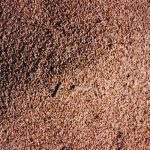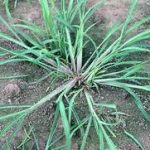Echinochloa colona
Uses
Chad (central): grains eaten. India (Rajasthan, western); West Bengal: grains boiled in water and used as a substitute for rice. When plant starts drying, branches are threshed and seeds pounded for flour for making bread. Sudan (Kordofan, Darfur): seeds ground into flour from which a porridge is prepared; or Kisra, a flat bread. Nigeria (Kano State, northern): seeds [sic] eaten. Tanzania (Nachingwea, Moshi and Nandi regions): seeds stone-ground into flour. Zambia (Gwembe Valley). Seeds eaten
Additional Information
- Name Authority:
- (L.) Link.
- Vernaculars:
- Chad (central) - Arabic: Diffré. Rajasthan (western): Soma, Sama, Sawa, Homa. Sudan: Difra, Jungle Rice inzibaiba. Zambia (Tongan):inzibaiba.
- Misc:
- see MICHAEL 2009 for discussion of accepted species nomenclature. Chemical composition (Sudan sample): Protein (crude) = 10.6% (dry). Oil = 5.9% (dry). Fibre (crude) = 12.3% (dry). Ash (insoluble) = 8.7% (dry). Fibre (crude) = 12.3% (dry). Carbohydrate (soluble): Starch) = 51.1% (dry). Sucrose = 1.0% (dry). D-glucose = 0.4% (dry). D-fructose = 0.4% (dry). Amino acids (g [16g N]-1): Aspartic acid = 5.2g. Threonine = 3.5g. Serine = 4.7g. Glutamic acid = 25.3g. Proline = 8.2g. Glycine = 2.6g. Alanine = 10.3g. Valine = 5.8g. Cysteine = 0.8g. Methionine = 1.6g. Isoleucine = 4.6g. Leucine = 10.8g. Tyrosine = 4.3g. Phenylalanine = 6.9g. Histidine = 2.1g. Lysine = 2.1g. Arginine = 41.g. Fatty acids (g/100g) (saturated): 14:0 = 0.1g. 16:0 = 16.9g; (saturated): 18:0 = 3.1g. 22:0 = 0.3g. 24:0 = 0.2g.; (monounsaturated): 16:1 = 0.1g. 18:1 = 27.4g. 20:1 = 0.4g; (polyunsaturated): 18:2 = 50.5g. 18:3 = 1.0g. Minerals: Sulphur = 0.11% (dry). Potassium = 0.41% (dry). Magnesium = 0.22% (dry). Calcium = 0.05% (dry). Na = 0.01% (dry). K = 0.30% (dry). Zinc = 50mg/kg-1(dry). Iron = 108mg/kg-1 (dry). Manganese = 28mg/kg-1 (dry). Copper = 4mg/kg-1 (dry). Aluminum = 88mg/kg-1 (dry). Soil types favored by plant - Chad (central): clayey. Rajasthan (western): water-logged areas; moist, marshy places, older alluvial soils.

